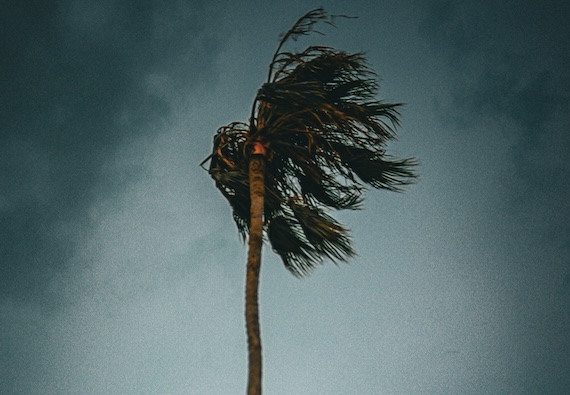By Simon Valle, Bangor University and David Jorge Pereira, University of Birmingham
(The Conversation) – When a major cyclone tears through an island nation, all efforts rightly focus on saving human lives and restoring livelihoods. However, these storms have permanent consequences for other species that are often forgotten.
As the world continues to heat, cyclones are expected to become more frequent, intense and unpredictable. The International Union of Conservation of Nature (IUCN), the global authority on biodiversity, lists storms as one factor threatening species. But just how much of a threat is still poorly understood.
The effects of cyclones on biodiversity are easily neglected because the damage is sudden, scattered and hard to measure. Extinctions can be abrupt and go unnoticed. This largely overlooked extinction crisis is likely to worsen with climate change.
In a new study, we measured the threat posed by tropical cyclones on the diversity of land-based mammals, birds, amphibians and reptiles globally. We mapped all severe tropical cyclones that occurred between 1972 and 2022 and checked how many overlapped with areas widely recognised to be exceptionally rich in species, otherwise known as biodiversity hotspots.
We focused on severe cyclones only – those with wind speeds exceeding 130 mph – as historically, it is these that have caused species to severely decline or go extinct.
What we found surprised us: three-quarters of all severe cyclones struck hotspots which are entirely comprised of islands. This seemed alarming. Islands have an inherently high extinction risk anyway because they support many species that are found nowhere else and which evolved in isolation. These species often have very small populations and nowhere to escape when disaster strikes.
Even more worrying, more than 95% of the severe cyclones that struck island biodiversity hotspots hit the same five ones. In descending order of cyclone frequency these are: Japan, Polynesia-Micronesia, the Philippines, Madagascar and the Indian Ocean islands, and the Caribbean islands.
We clearly identified high-risk areas, but what does this mean for the animal species that live there? To find out we consulted the red list of threatened species which is compiled and regularly updated by the IUCN to see how many vertebrate species were noted for their vulnerability to storms.
One cyclone away from extinction
The hotspots experiencing the most severe cyclones are not necessarily those that have the most storm-threatened species. For example, Japan has the most storms but the fewest species at risk, whereas the Caribbean has fewer storms but over 128 species are threatened by them. This suggests that the frequency of cyclones alone does not determine the danger to each region’s biodiversity.
Other aspects are likely to play a role. In particular, the data indicates that species in island biodiversity hotspots made up of a lot of small islands are more at risk of local or global extinction.
The more we learned about the dangers posed by cyclones, the more concerned we became. Many species are so restricted in range that they could be entirely wiped out by just one cyclone. It has happened before. The Bahama nuthatch (Sitta insularis), a small forest-dwelling songbird, is thought to have gone extinct following the passage of Hurricane Dorian in 2019.
Preparing for the unpredictable
To begin raising awareness and help conservationists prioritise their efforts, we compiled a watchlist of the species that are most at risk from tropical cyclones. This includes 60 storm-threatened species which are present only on a single location on a single island.

Photo by Stephen Scarboro on Unsplash
For each of these 60 species, the next severe tropical cyclone may be their last. A better understanding of the distribution and status of these species is only the beginning. Conservationists need to plan how to help them avoid a sudden demise.
The need to act quickly is clear. Of the 60 species on our list, only 24 are part of any active conservation effort and just six are in captive breeding programmes. Coordinated efforts are our best bet and we propose a task force under the IUCN to allow better preparation, rapid response and international support.
With the right knowledge and foresight, we can ensure human recovery and ecological survival for future generations.
![]()
Simon Valle, Conservation Planning Officer at IUCN SSC Conservation Planning Specialist Group & Honorary Lecturer in Conservation Science, Bangor University and David Jorge Pereira, PhD Candidate, Conservation Science, University of Birmingham
This article is republished from The Conversation under a Creative Commons license. Read the original article.


 © 2025 All Rights Reserved
© 2025 All Rights Reserved